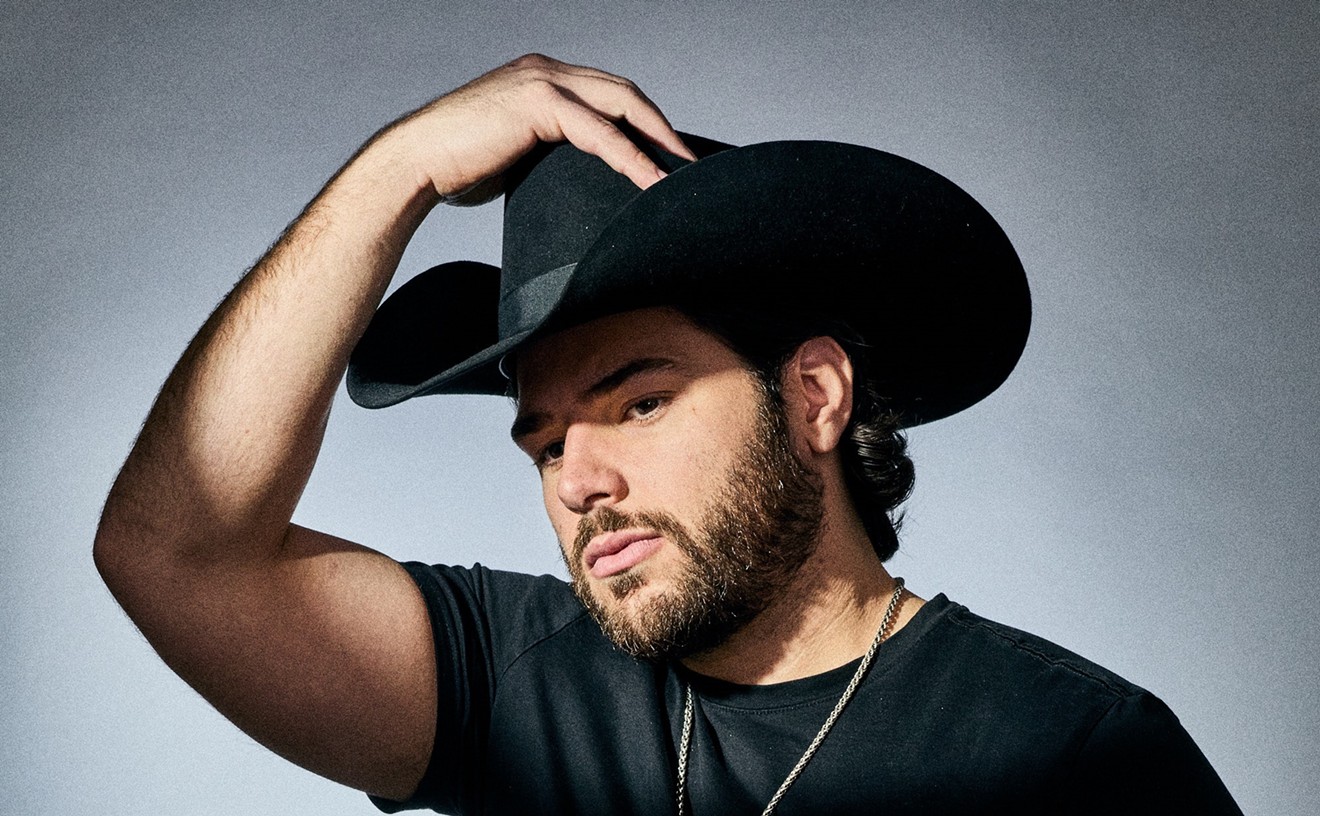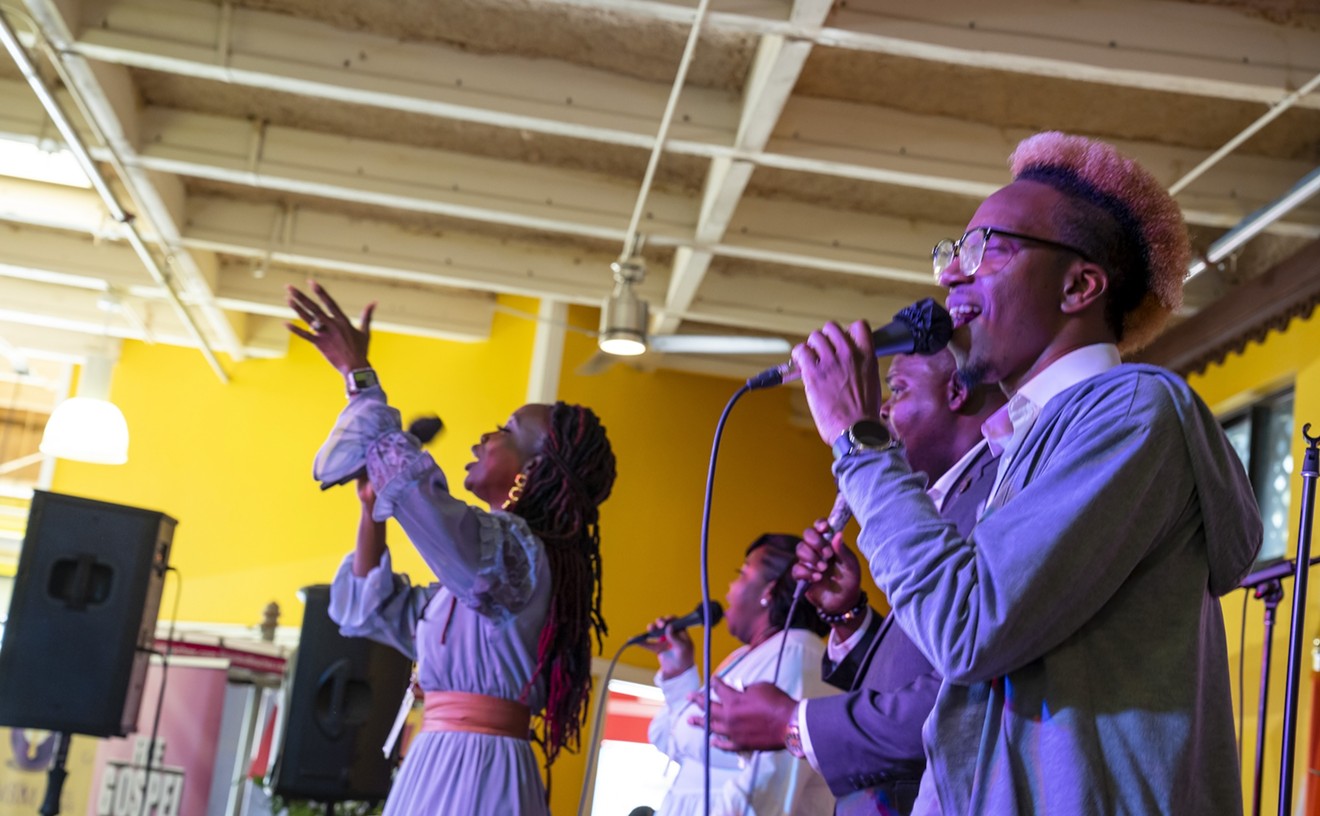Brazil is a nation of vast contrasts, of haves and have-nots. It is also a land with a dauntingly complex musical tradition. Its various rhythms are rooted in the diversity of its people -- Portuguese colonizers, natives, Africans brought in as slaves, and countless other immigrants who landed in the country over the years. In Kaurismaki's enlightening documentary, the director, who has lived in Brazil since 1990, shines a light on a small sample of these musical traditions.
"For the film I did quite a lot of research and soon realized that there was so much music in Brazil that it wasn't possible to show everything in one film," he explains via e-mail from Bahia, where he resides. "That's why I decided to concentrate more in the roots of samba and the musical traditions in the northeast of Brazil and Rio de Janeiro."
Although Brazil is home to countless musical genres (axé in Bahia, forr in most of the northeast, mangue beat in Pernambuco, and many others), samba is probably the most recognizable to American audiences, thanks to actress/dancer Carmen Miranda and movies like Disney's Aquarela do Brasil (1943).
Moro No Brasil opens in snow-covered Helsinki, with the story of Kaurismki's initial frustrated attempt to travel to Rio on a cargo ship during a school break in 1970, when he was fifteen years old. "The prologue tells that I'm a foreigner coming from the other side of the world," he says. "It also tells that my interest in Brazil and Brazilian music dates way back." In one scene, he clutches an international edition of a compilation LP of Brazilian music, the likely trigger for his early fascination.
After that brief introduction, the film segues to the serto (countryside) of the northeastern state of Pernambuco, where Kaurismaki traces the origins of samba to the music of the Fulni-o Indians, whose language and culture predate Brazil's Portuguese colonization. Still living much as their ancestors did hundreds of years ago, the members of the small tribe discuss their heritage and the need for its preservation.
The next stop is Caruaru, a small town about three hours west of the state's capital, Recife. There the film introduces Silverio Pessoa, a young innovator of forr, a syncopated dance beat that has gained popularity stateside in recent years. He explains that growing up, he heard the sounds of local musical pioneers like Jackson do Pandeiro and Luis Gonzaga, which heavily influenced his sound later on.
In Recife we are introduced to the maracatu, an Afro-Brazilian beat. What distinguishes it is the use of atypical instruments for the country, like the fiddle, saxophone, clarinet, and flute, which are then added to the rich percussive elements characteristic of the region. Also from Recife, the film explains, comes the embolada, which is an improvised form of song that sounds almost like rap. The genre, however, has been around for generations, consisting of basically two performers trading impromptu verses while beating on a pandeiro, the country's version of a tambourine.
The penultimate stop is the neighboring state of Bahia, arguably the most fertile ground for Brazilian music: Legends like Caetano Veloso, Gal Costa, and João Gilberto were born or raised in this city. The development of music here, the film tells us, was heavily influenced by the Afro-Brazilian religion Candomble.
Finally comes Rio de Janeiro, where Kaurismaki explores the sounds of the various samba "schools," as well as the funk-inflected samba of the more urban areas of the city. A prefame Seu Jorge, who gained international attention for his Portuguese-language David Bowie covers for the soundtrack to The Life Aquatic with Steve Zissou, talks about how a homeless stretch actually led to his career.
"After two aimless years, after having been expelled from the army and having lived on the streets," he explains on the DVD, "I met [songwriter] Gabriel Moura and fell in love with his voice and the way he played guitar. It was then I realized that I had to become a musician, which wasn't exactly well received by my family, who thought I had gone mad."
The joyous end of the film features several performances captured live at Mika's Bar, the nightclub Kaurismki opened in Rio a few years ago. Luminaries who appear include Seu Jorge, Jorge Alfaiate (a samba composer who is relatively unknown outside Rio samba circles), and the Velha Guarda da Mangueira, a group of elder statesmen of mangueira, one of Rio's many schools of samba. Striking in the crowd scenes is the mix of races, cultures, and class.
"It was clear from the beginning that the film was not only about music, but also about the people who make music," Kaurismaki explains. "Socially Brazil is a land of contrasts -- people are rich or poor, black or white -- and in my travels during research and filming, I learned a lot about the everyday struggle of the Brazilian people.
"Brazilians like to listen to Brazilian music," he adds. "The specialty of Brazilian music is that it's more than just entertainment; it's kind of a survival ritual, closely linked with dance, an important part of people's lives."










